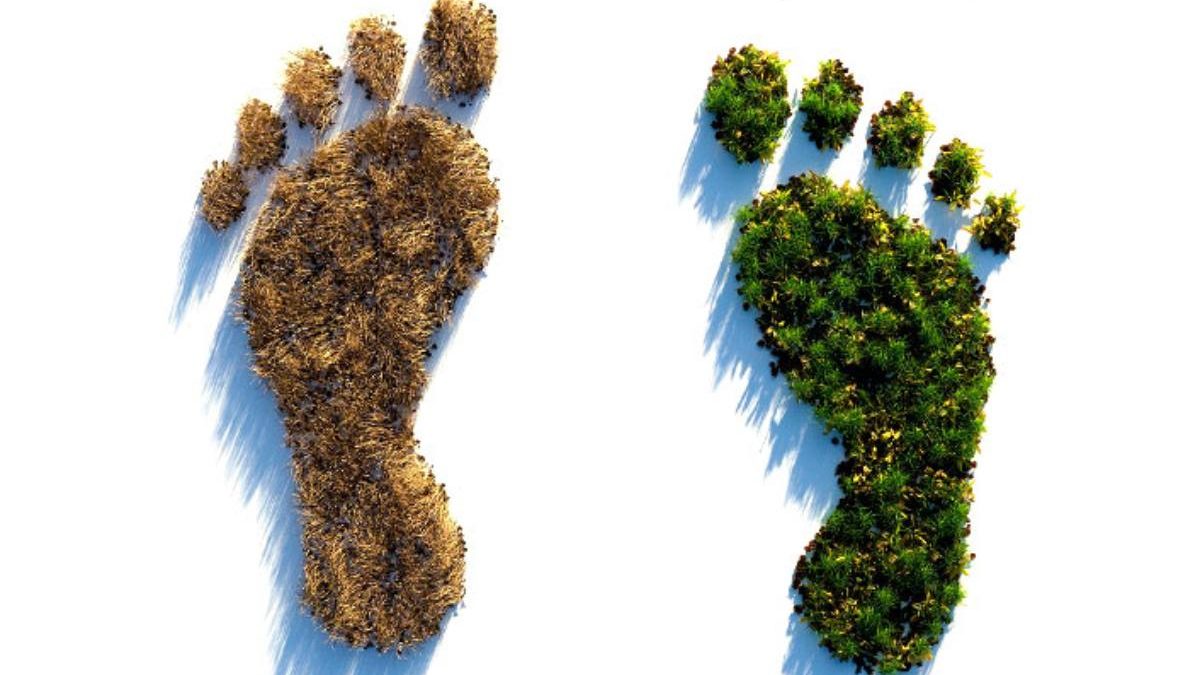Ecological Footprint – Definition of the environmental footprint: it is the total naturally productive area compulsory to produce the resources consumed Ecological Footprint by an average citizen of a certain human community and the quantity necessary to grip the waste it generates, regardless of the location of these areas.
It measures the impact of human doings on nature, represented by the surface necessary to produce resources and absorb the effects of said activity.
The ecological footprint concept is measure from global hectares (hag), those with the average global capacity to produce resources and absorb waste.
This zone adds the productive land (or biocapacity) needed for crops, pastures, and urbanized land, fishing grounds, and forest areas to absorb CO2 emissions that the oceans cannot absorb. Biocapacity and ecological footprint are expressed in the same unit: global hectares (hag).
Table of Contents
What is Biocapacity?
Biocapacity refers to the ability of an exact biologically productive area to make a supply of renewable resources and grip the waste resulting from its consumption (Green Facts, 2017).
What is an Ecological Deficit?
An imbalance occurs. An environmental shortage happens when the abuse and utilization of regular assets surpass the limit of an area to produce accessible assets.
During the 1980s, humankind’s impression surpassed the World’s complete biocapacity interestingly. From that second on, this request expanded. Nonetheless, for 2005, the determined biological impression per individual was 2.7 gha, surpassing the planet’s ability by 0.6 gha.
In 2005, request was 30% more prominent than supply. One model is the carbon impression, which has expanded more than ten times beginning around 1961. Different researchers planned this marker during the 1980s to address the accompanying inquiry:
What is the biological capacity of the planet required by a population or a specific activity? (Source: Earth Day Network)
Types of Ecological Footprint
There are three kinds: Direct It is the one who envisages direct action, without intermediaries, on the capacities of nature.
Insinuation. It is the one that does not directly affect nature’s abilities but generates effects that do so indirectly.
Collective, It is the one that is the result of large communities and regions in which direct and indirect footprints generate
Basics of the ecological footprint. An indicator of sustainability
The concept of the footprint is starting to consolidate internationally as an indicator of sustainability. There is an indicator accepted and used worldwide in the economic context, GOTS Certified companies in India such as Gross Domestic Product (GDP).
Despite this, in the face of the new challenges that the world has in store for us, we must analyze the information provided by GDP to generate balanced political views that express our commitment to the environment and social well-being.
Have you Ever Wondered How Much Nature your Lifestyle Needs?
We understand the Ecological Footprint as the ecologically productive area needed to produce the resources that a citizen consumes and the extent required to absorb the waste they generate, regardless of the location of those areas.
We had previously dealt with this question from a theoretical point of view and gave the notions on which these complex calculations of the ecological footprint methodology base.
However, practical and very didactic approaches can give us an idea of our consumption rate. Above all, they help us to think.
How much do you need to live, and how much do you use? What is your ecological footprint?
To introduce us to this concept and estimate our ecological footprint, we have web calculators at our disposal that show us how sustainable our presence on the planet is.
Typically, these tools address the following areas:
Energy: Energy consumption in the house. Global calculations by type of energy per year and the cost involved.
Water: Estimation of the consumption percentages on average consequences of the generalization of your style of water consumption.
Transport: How many complete turns could you give the planet by adding up all the trips in a year?
Waste and materials: Amount of garbage produced in the house


